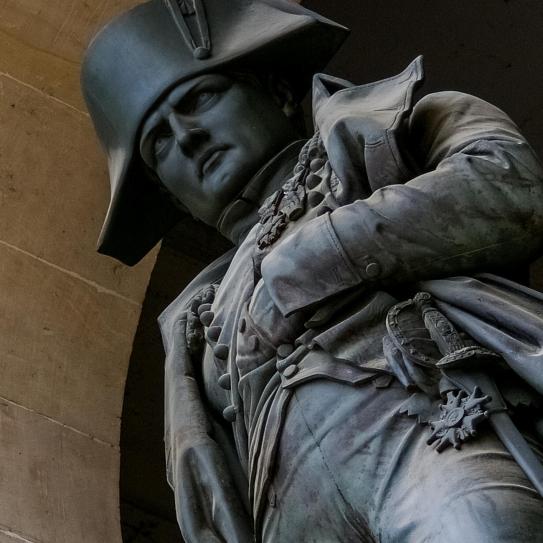Professor William Duggan, senior lecturer in business, says it would be difficult to find any historical writings about how to create an entrepreneurial idea — that 1 percent of effort that’s essential to launching a business venture. What entrepreneurs do before and after they think of their ideas constitutes the other 99 percent.
Fortunately, modern neuroscience, specifically learning and memory, supports the 1 percent of effort to formulate good ideas, says Duggan, who has authored three books about innovation. His elective course explores how to creatively ideate, using a slice of history from the French Revolution to provide some context.
“We now know a lot about how creative ideas happen in the human mind, so by understanding how it works, you can learn to do it better,” says Duggan. “That’s the key here: how you get a good idea versus just any idea.”
The type of thinking Duggan promotes is what he calls strategic intuition. It’s at the heart of the course, Napoleon’s Glance.
Duggan uses 10 instructional tools to open up the mind to creative ideation, potentially helping students in their personal and professional lives. “I show a lot of examples so people can see how this works from all different angles,” says Duggan. “I go into personal strategy. What does this mean for ideas for my life, my career, not just my company?” He notes its importance to entrepreneurs, who are making both a personal and professional decision when they decide to launch a business.
Napoleon and Joan of Arc
Duggan knew that learning and memory were natural to human behavior — they account for the development of good ideas and innovations since the beginning of civilization. He wondered if anyone else had described strategic intuition before neuroscience began to explain it.
“It's by chance that I found the word strategy entered the English language in the year 1810, which is very late for ordinary English words,” says Duggan, “This seemed odd to me, so I looked it up, and it turned out it had a military origin.”
Duggan explains that Napoleon Bonaparte was at the height of his success in 1810. He was England’s big challenge, and the English started studying military strategy to defeat Napoleon. “This was the start of a formal academic discipline taught in universities,” says Duggan. The famous scholar of that era was Prussian general Carl von Clausewitz, who's book On War is still in print. “When you carefully read his book, he describes something that is actually very similar to this later neuroscience.”
When the mind is clear, it’s more open to receiving flashes of insight, and that is when things come together. “It’s a sudden insight that shows a person what action to take. It’s not magic; it's based on real elements of your mind,” says Duggan.
“One of the examples I show in class is that for a very important upcoming battle, Napoleon had drawn from something Joan of Arc did in her most famous battle. That came to him from his memory. He paused to let his mind wander to everything in his memory. And then, Napoleon hit upon an action Joan of Arc had taken that was now relevant to his problem,” explains Duggan.
Von Clausewitz described the use of this strategic intuition with the French term coup d'œil, which means glance. And that’s where Napoleon’s Glance comes from.
For decades, the dominant method of creative ideation has been brainstorming. The theory goes that the right side of the brain generates creative ideas spontaneously. Duggan explains: “The new science tells us there is no right side of the brain when it comes to thinking, and that creative ideas come from a slower piecing together of elements from memory. This course teaches methods more in keeping with that new science. If you ask successful entrepreneurs, ‘How’d you get that original idea?’ they will almost never tell you it was from brainstorming.”
